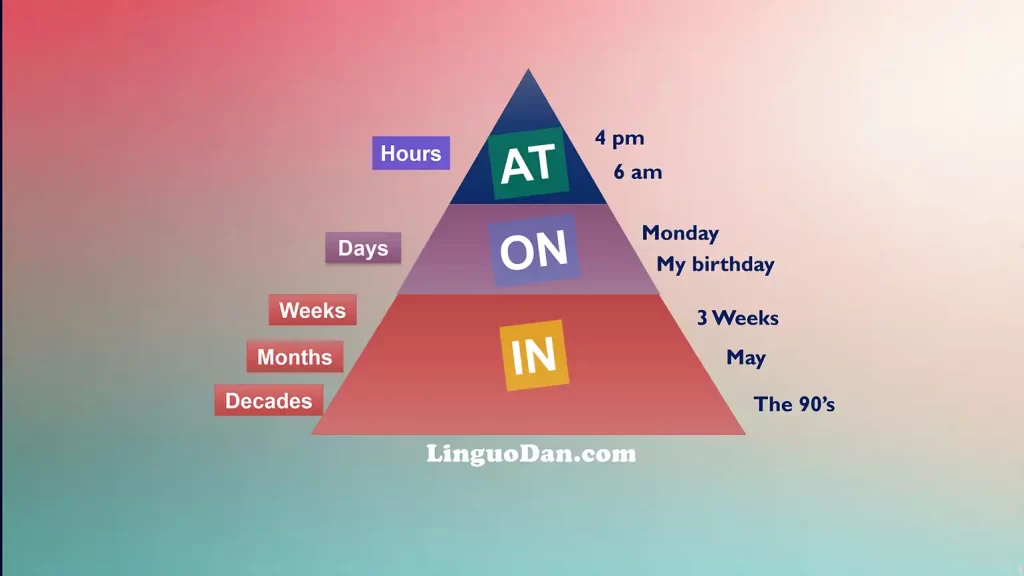Use of prepositions: at, in, on

Simple prepositions in English in practice
What are prepositions?
Prepositions are parts of speech that indicate the relationship between nouns, pronouns, phrases, or sentences and other elements in the sentence. They provide additional information about time, place, direction, manner, and other aspects. For example, in the sentence “The book is on the table”, “on” indicates the location of the book.
Types of prepositions in English
Table of simple basic prepositions with rules
| Preposition | Common Usage | Usage Rules | Example |
|---|---|---|---|
| in | in the room, in July, in the morning | Used for enclosed spaces or periods of time. | She is in the house. |
| Also used with months, years, and seasons. | I was born in July. | ||
| on | on the desk, on Monday, on the 10th of May | Used for surfaces or specific days. | The book is on the table. |
| Also used with days of the week and dates. | We’ll meet on Monday. | ||
| at | at the door, at noon, at the party | Used for specific points or times. | She arrived at 3 o’clock. |
| Also used for specific places or events. | We met at the cafe. | ||
| by | by my side, by Friday, by car | Shows proximity or a means of action. | She stood by the window. |
| Shows a deadline or means of transportation. | The project must be done by Friday. | ||
| for | for you, for a week, for the party | Used to indicate a purpose or duration. | She bought flowers for her mother. |
| Also used to indicate a recipient. | This gift is for you. | ||
| to | to the store, to her friend, to school | Shows direction or movement toward something. | They walked to the park. |
| Used with verbs to indicate a recipient or goals. | She gave the book to her friend. | ||
| from | from the airport, from my friend, from home | Shows a starting point or origin. | He came from Spain. |
| Used to show a source or cause. | The letter is from my boss. | ||
| with | with my family, with a pen, with pleasure | Shows association or accompaniment. | She went shopping with her sister. |
| Used to indicate use of something or togetherness. | I made a cake with chocolate. | ||
| of | friend of mine, part of the plan, top of the mountain | Used to show possession, origin or belonging. | A friend of mine called me. |
| Also used to indicate a component or location. | The top of the mountain was covered in snow. |